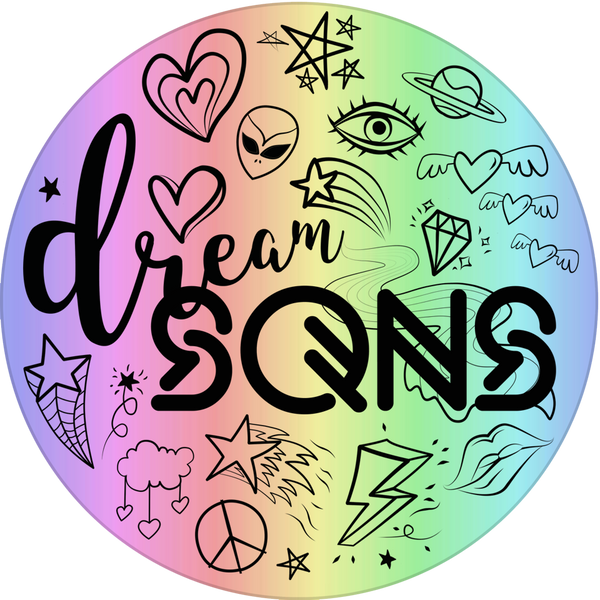
The Significance of Glitter in The Queer Community
Share
Here at DreamSQNS headquarters, we are super gay. We can't imagine having a glitter company that is not super gay. Glitter has been a pilar in the queer community for decades, and we are serious about keeping it that way by supporting our South African queer community.
But we got to thinking - where exactly did glitter meet the gays?
We know glitter carries a profound significance within the queer community, weaving through its history, protests, makeup routines, and drag performances. Beyond its shimmering surface, glitter embodies resilience, celebration, and defiance, becoming a symbol of pride and empowerment. But how did we get here?
Glitter's journey within queer culture traces back to the 1970s, a decade marked by the rise of the LGBTQ+ rights movement. As activists took to the streets demanding equality and recognition, glitter emerged as a form of protest, adorning banners, signs, and queer bodies. Its radiant presence amidst the protests served as a visual representation of resilience, defiance, and the refusal to be silenced. In many ways, glitter became the metaphorical armor of the LGBTQ+ community, reflecting their unwavering spirit and determination in the face of adversity. And what a way to stand out in a crowd!
Moreover, glitter found its way into queer makeup routines, transcending traditional gender norms and allowing individuals to express their authentic selves. For many, makeup serves as a form of self-expression and empowerment, and glitter adds an extra layer of vibrancy and volume. Whether it's a subtle dusting across the eyelids or a bold statement on the lips, glitter enables individuals to embrace their identities unabashedly, regardless of societal expectations or conventions.
In the realm of drag, glitter reigns supreme as an essential tool in the transformation process. Drag performers utilize glitter to elevate their looks, embody characters, and captivate audiences. The magic of glitter in club lighting is dazzling! The transformative power of glitter extends beyond its aesthetic appeal, serving as a catalyst for self-discovery, confidence, and liberation. Through the art of drag, performers defy conventional notions of gender and beauty, using glitter as a form of artistic expression and political statement. Each shimmering particle becomes a testament to the resilience and creativity of the LGBTQ+ community, challenging norms and celebrating individuality.
Beyond its symbolic significance, glitter holds a practical purpose within queer culture, serving as a beacon of visibility and solidarity. In spaces where LGBTQ+ individuals may feel marginalized or unseen, the sparkle of glitter becomes a unifying force, signaling belonging and acceptance. Whether it's a glitter-covered Pride parade or a queer club illuminated by shimmering lights, glitter creates a sense of community and celebration, reminding individuals that they are not alone in their journey.
We strive to keep glitter the gay bestie of the South African makeup community. In a world where most cosmetic items are made for traditional beauty, we aim to be loud and proud, and welcome anyone to the party. We are super excited to be supporting our South African queer community as our little glitter empire grows. Nothing compares to the feeling of seeing our community sparkle with DreamSQNS.
In conclusion, glitter serves as more than just a sparkling embellishment within the LGBTQ+ community; it is a symbol of resilience, empowerment, and solidarity. From its origins in protests to its role in makeup and drag, glitter embodies the spirit of defiance and celebration that defines queer culture. As the community continues to navigate challenges and push for progress, the shimmering allure of glitter remains a constant reminder of the strength and beauty found in diversity. So, the next time you see a glimmer of glitter, remember the vibrant history and significance it holds within the LGBTQ+ community. And when you wonder which glitter your favourite Cape Town drag queen is wearing - trust and believe, it can only be DreamSQNS!
